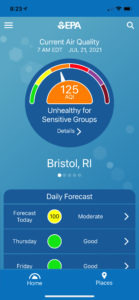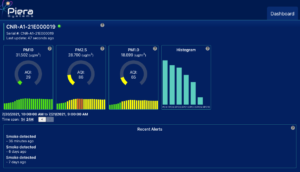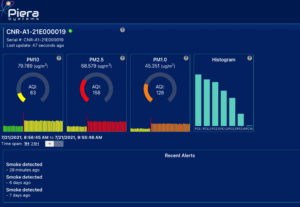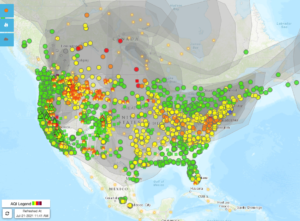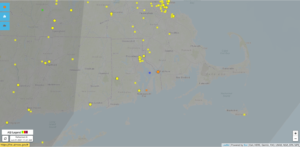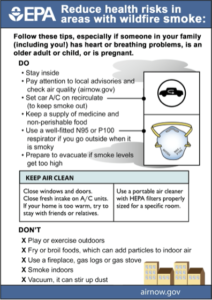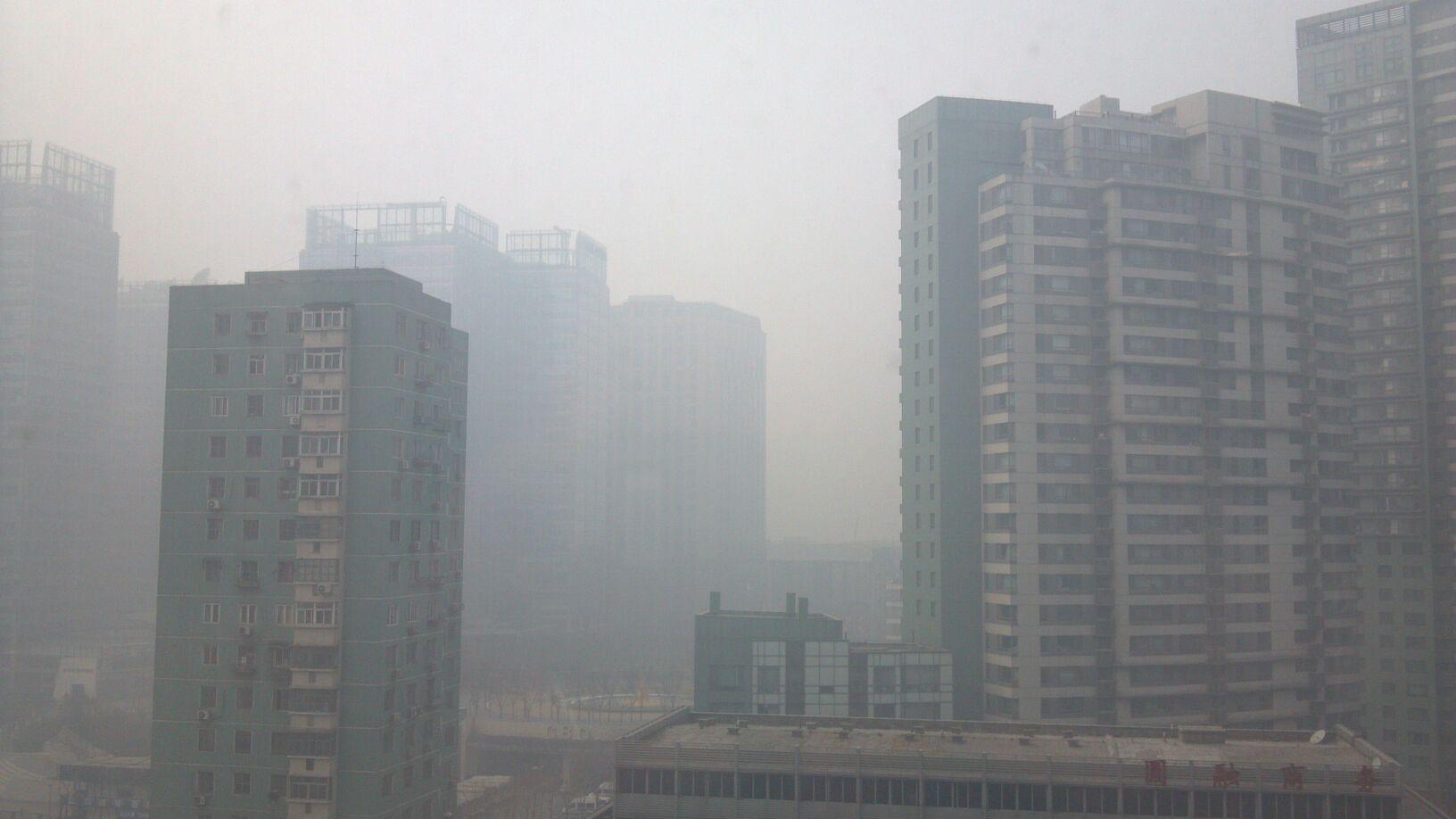Yesterday (7/20) I noticed that my Canāree A1 located in my office in Bristol, RI started reading AQI values ~120 (orange, unhealthy) after weeks of green values. I wondered why?
Went out for a cruise on Narragansett Bay from 7-9 pm and the air smelled like burnt wood, the sky was hazy with a yellow/orange moon. I overhear someone say it’s due to wildfire smoke. I think she’s mistaken.
This morning at 6:30 AM, Canāree continues to show unhealthy air. I take a 4.5 mile walk outdoors, same smell and the Boston NPR radio station states haze from wildfires in Western US (Oregon and California) would affect us all day. Checked AirNow, the EPA site and saw same warning with PM <2.5 being most of it. This station is in Fall River ~20 miles away.
To the left is the Canāree indoor data for the last 24 hours. The historical data from my Canāree is here. Note the increase in PM2.5 and 1.0 ~3 pm yesterday when wildfire smoke entered the area. I also have a Sensirion SPS30 PM sensor which reports about half the amount of PM and identical values for PM10, 2.5, 1.0 so it doesn’t see the <1.0 PM values, can’t report smoke and is off by 50 %.
This morning at 9:15 AM I moved the Canāree and Sensirion outdoors. It detected a smoke event within minutes as all 3 PM values spiked with the majority being PM 1.0 and below. This real-world example shows how Canāree detects wildfire smoke in real time, its intensity and size. The forecast is for the air to improve and clear throughout the day.
Coincidentally, two days ago, the EPA published this bulletin on Wildfire Smoke and Indoor Air Quality. They recommend two steps; monitor the levels in your area using the Fire and Smoke Map from Airnow.gov and take steps to mitigate. Here is the Fire and Smoke Map for US and my area including that sensor in Fall River, the orange dot to the right of the blue one (me in Bristol).
Since the EPA stations are far apart, report every hour and the AQI is a 24-hour average you can’t rely on it to help you know the local conditions. It’s value is more of an early warning system. The AQI in Bristol was 158 and red 50 % higher than Fall River at 121 and orange. PM 1.0 is 46 ug (mass concentration, a measure of the weight of all the particles) with PM2.5 = 68 ug. So, 68 % is PM <1.0 which the EPA doesn’t report (just < PM2.5 and 10). The recommended daily average value for PM 2.5 is 12.5 ug so we are breathing 4x with most of that PM 1.0!!! This is a serious health threat and Canāree reports more accurate, real-time updates that reflect your local conditions and can augment the EPA Fire and Smoke Maps.
What should I do? Should I mask up, get an air purifier? Stay indoors? EPA guidelines include:
• Close windows and doors
• Close fresh intake on A/C units
• Use a portable air cleaner with HEPA filters properly sized for the room in your home.
• If your home is too warm, try to stay with friends or relatives
Hopefully they have a clean room
Follow the guidelines but continue to monitor to determine their effectiveness. Canāree will help you see in real-time if these steps are working. Real world testing at our Mt. Shasta location during the Lava fire suggests a properly sized air purifier works quickly. What size? CADR is one key metric, find out more here or use the CADR size calculator here. Just remember that you’ll need to monitor the purifier to see how well it’s working and if the filters need replacing.
In summary, Canāree is the only indoor AQM that can classify sources like vape, smoke, etc. It will monitor your indoor air quality and help you improve it cost effectively. Contact us at www.pierasystems.com to learn more.

